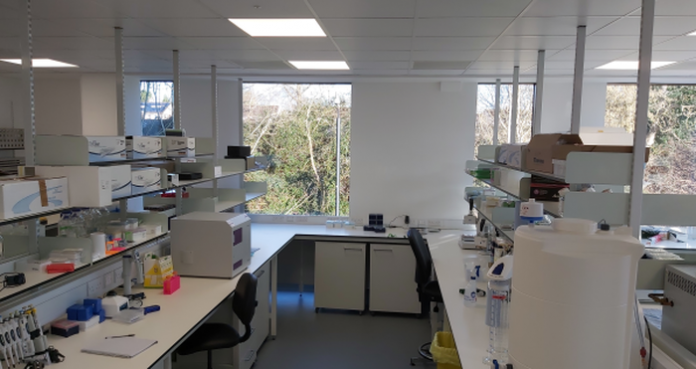Sitryx, a company which is focused on regulating cell metabolism to develop disease-modifying therapeutics in inflammatory diseases and immuno-oncology, announces that it has expanded into new premises in the Bellhouse Building at The Oxford Science Park (TOSP), one of the UK’s leading parks for science and technology companies. Sitryx has developed rapidly since its transformative 2020 licensing and research collaboration with pharmaceutical company Eli Lilly. Its new premises provide the ideal environment for growth as its immunometabolism work progresses. Relocating from the Sherrington Building at TOSP, Sitryx is the second occupier of the new Bellhouse Building.
Currently employing 23 staff, of which 16 are research scientists, Sitryx has moved into 5,500 sq ft of purpose-built laboratory and office space. This provides a high-quality lab environment supporting an expanding research team, and a cohesive collaboration environment, supporting all aspects of the company’s activities.
In order to inspire science and technology occupiers, and in recognition of his achievements, the Bellhouse building was named after the academic entrepreneur Professor Brian Bellhouse. He read Mathematics at Magdalen College Oxford, which owns TOSP, and become a Professor of Engineering Science. Professor Bellhouse was one of the University’s earliest entrepreneurs, forming PowderJect in 1993 and locating it at The Oxford Science Park.
Rory Maw, Bursar of Magdalen College & Director of TOSP, said, ‘Fast growing and innovative life sciences companies like Sitryx are core to The Oxford Science Park, and we are delighted to see it expand to the Bellhouse Building. It’s always exciting to see companies develop on site and we look forward to supporting Sitryx through its next phase of growth.’
Dr Neil Weir, CEO of Sitryx, said, ‘This is an exciting time for us as we scale-up into excellent new premises in the Bellhouse Building, which will house teams working on multiple Lilly and Sitryx projects. We are delighted that this transition into new facilities has gone smoothly, according to timelines, particularly in the current climate.’






















